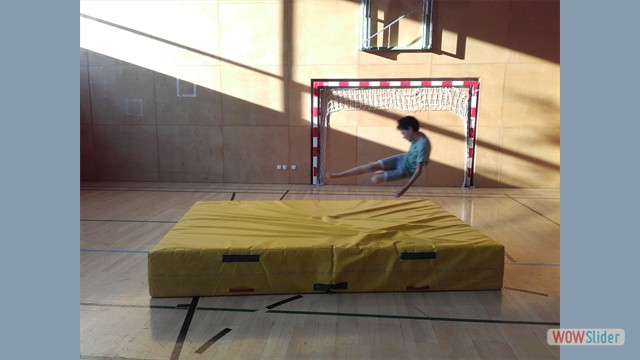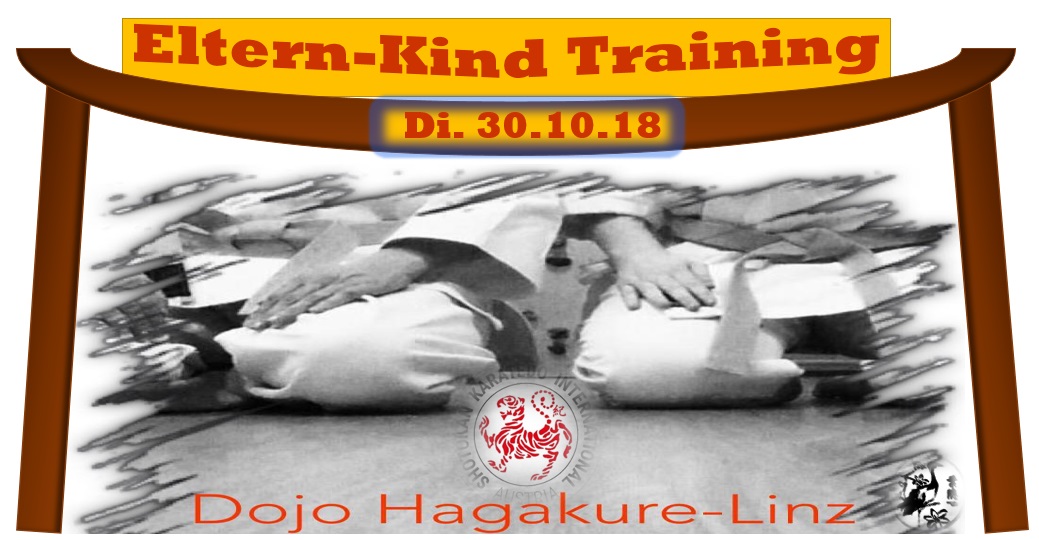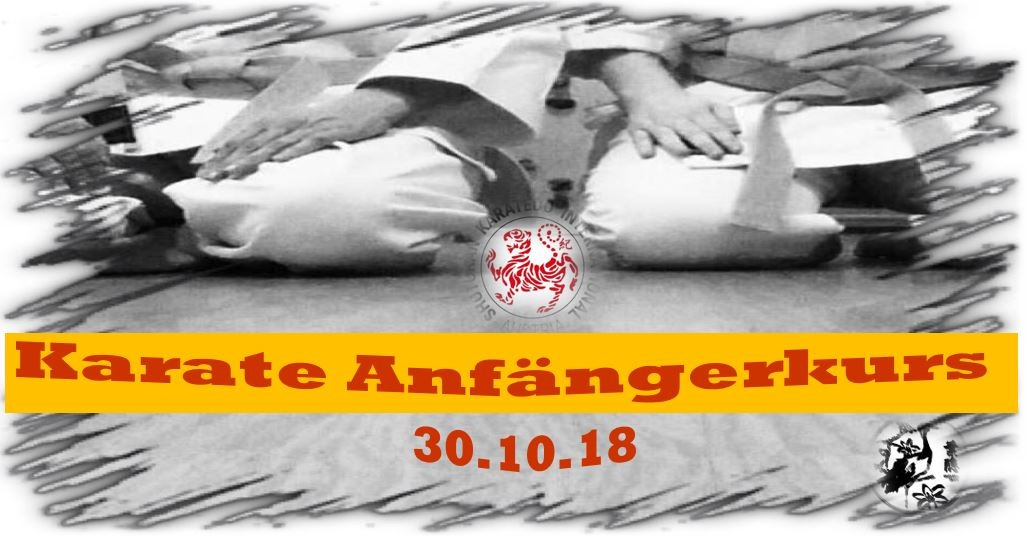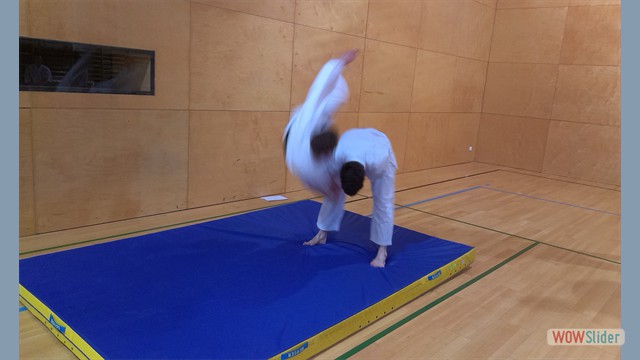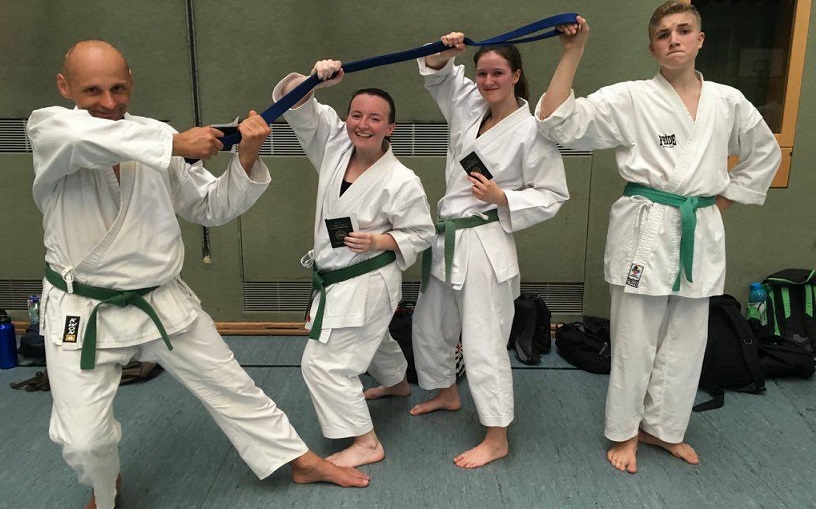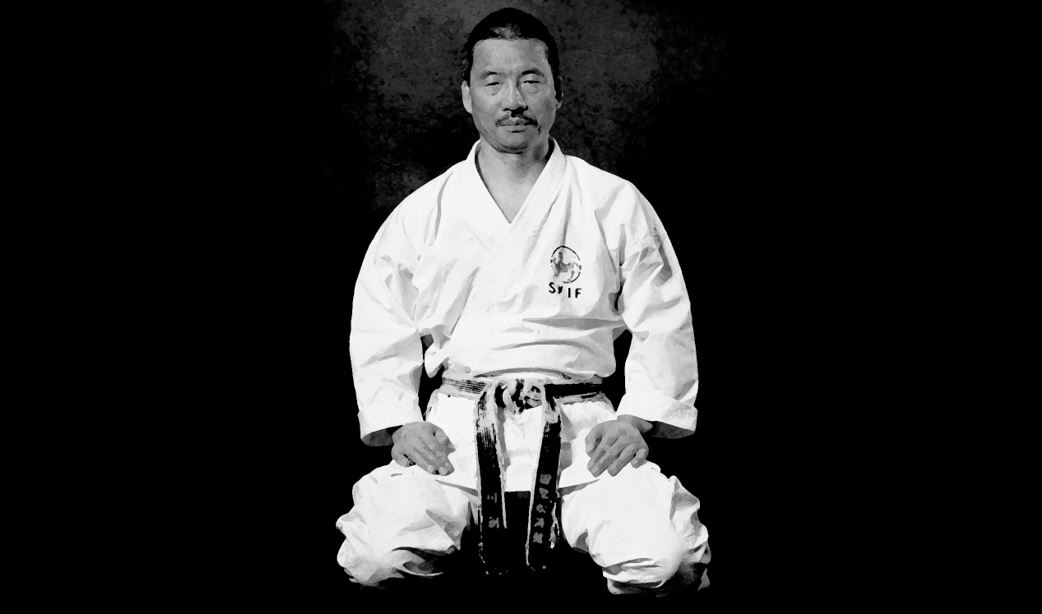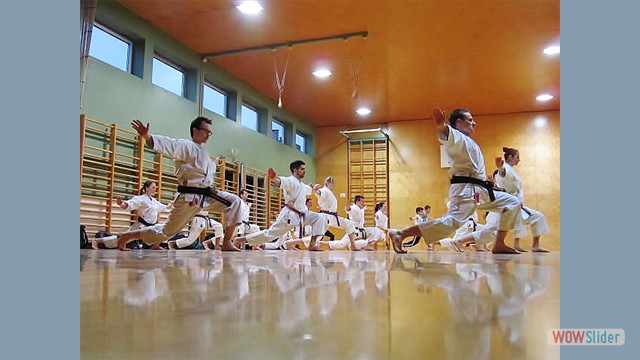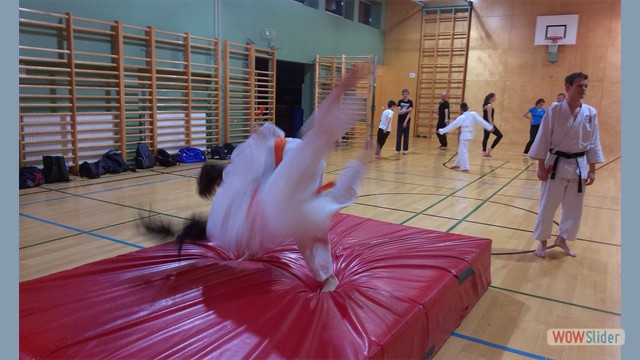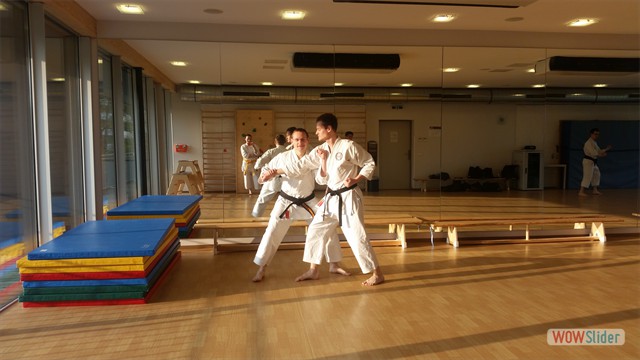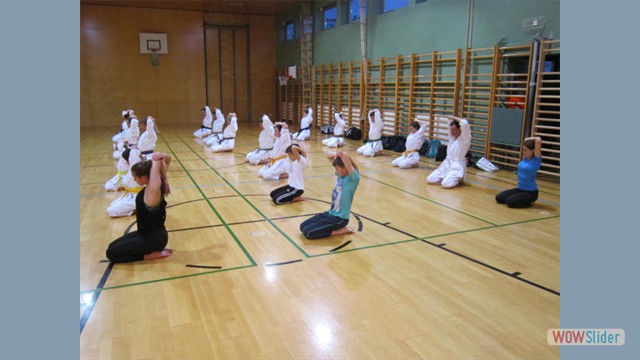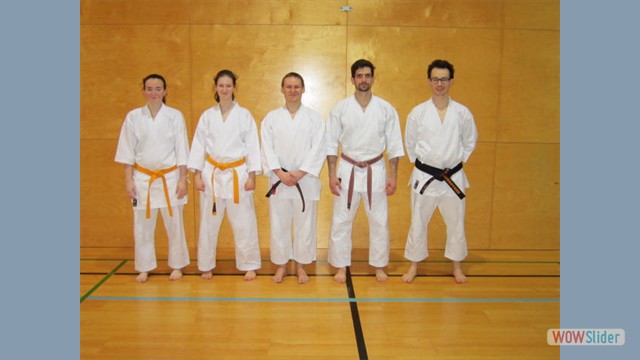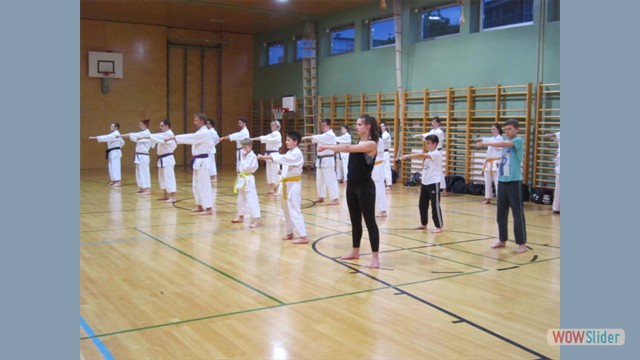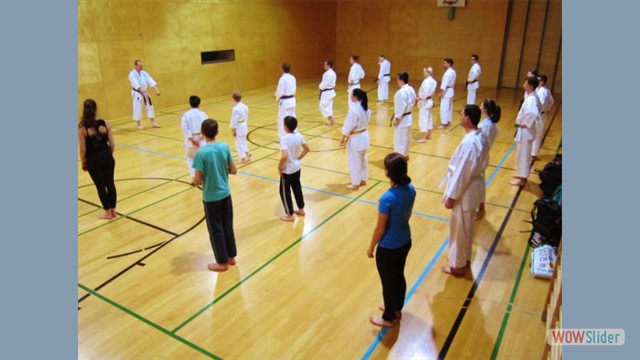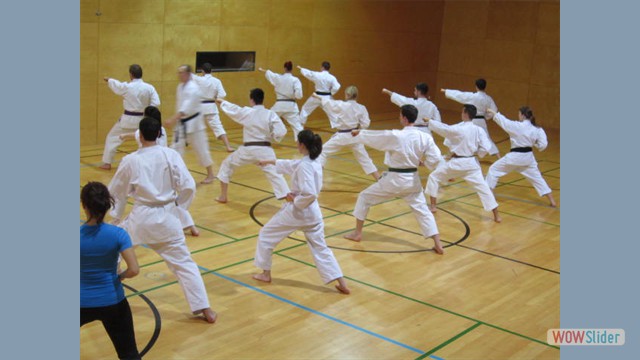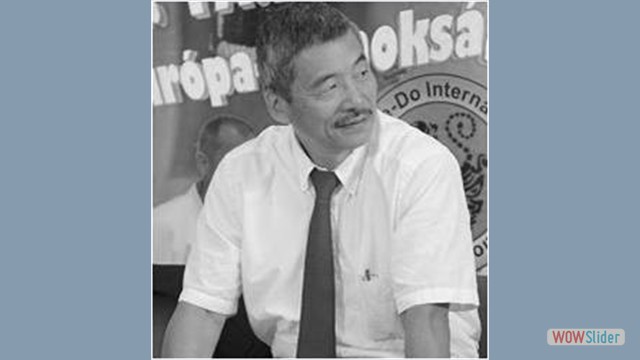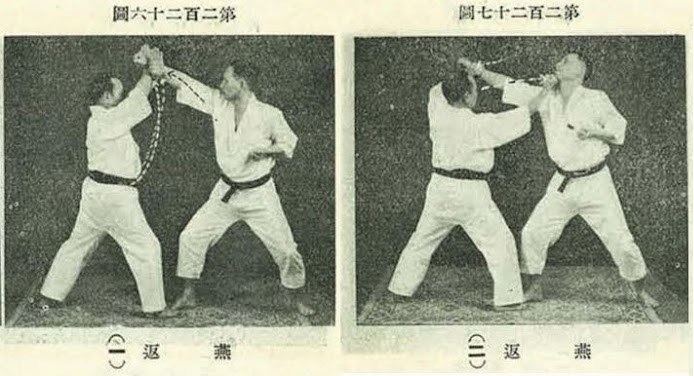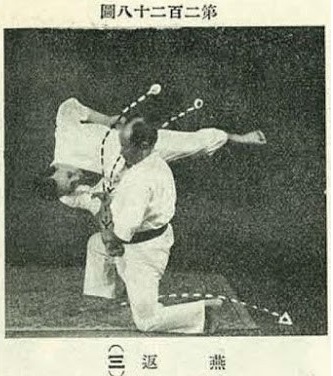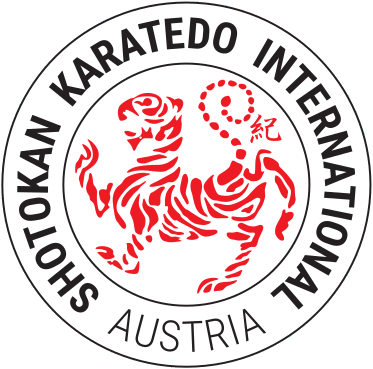Our Karate Approach
A different point of view
The karate that is taught in our club differs quite notable from most others. The main reason for this can be found in the strong connection that our foundation maintains to the origin of the art in Japan. We rely on the quality of Japanese instructors who study karate in their home country and later pass on the knowledge to us in regular seminars. As they are open for all grades everyone can take the chance to participate in those seminars to benefit from them.
Austria, in particular, has been a lucky country as we have had the privilege to train under grand master Shihan Norio Kawasoe for more than 30 years. The former University world champion settled down in Austria and had been teaching his approach since. Therefore, the mentality and the objectives of our training are considerably different in comparison to the to the more widespread sports karate. The later puts its main focus on championships, whereas our foundation tries to go back to the roots of karate and teach it as an effective method of civilian self defense like it used to be in the older days.
Kata: Passing on the Knowledge to Future Generations
It is essential to understand that the Japanese training concept incorporates fight choreographies or practical fight scenarios (jap. “kata”) to conserve the knowledge developed by the ancestors. Training those forms against an imaginary opponent develops a routine in the movements and makes them become more natural and flowy, but also provides a memory aid. The analysis of the movements and their practical application with a partner is crucial for the efficiency of this martial art and is called bunkai. Different katas tend to focus on different aspects in order to develop a continuously growing set of skills.
Master Funakoshi once sais about the first five beginners forms (Pinan/Heian 1-5), "Having mastered the first five forms, one can be confident that one is able to defend oneself competently in most situations."
These kind of patterns have been passed on for generations. Our foundation therefore strives to preserve this knowledge and to enable future generations to experience the beauty of this martial art for themselves. This aspect in particular reveals the biggest difference between the well-known sports karate and the traditional Japanese karate. The previously described forms have been adapted for championships and the original meaning of the techniques is of no interest anymore, as the solo performance on a dance-like competition is the primary goal. Sometimes the bunkai of the forms might be displayed in a separate category as part of the tournament, but it must be clarified, that this kind of performance only serves the modern demand for entertainment and has barely anything to do with the original meaning of the patterns.
Originally there were no championships in karate on Okinawa and katas were developed to defend oneself against an aggressive opponent. This is the kind of mindset we share and represents the roots that we try to go back to. Kumite (jap. “grappling hands”, or sparring) must be viewed under this premise too. In order to train the acquired skills on a partner it is reasonable to start slowly and introduce techniques one after one in a free sparring session. Thereby one can alter the distance, the range and the angles to optimise the level of control. The more the students advance the freer the movements become and the more the technical repertoire grows (from striking, kicking, sweeping to throwing). A certain amount of the most controllable techniques is later selected in order to enable a safe fight for competition purposes. ?Oder? Only a small amount of the technical range is later selected for championships in order to provide a safe environment for competitors.
